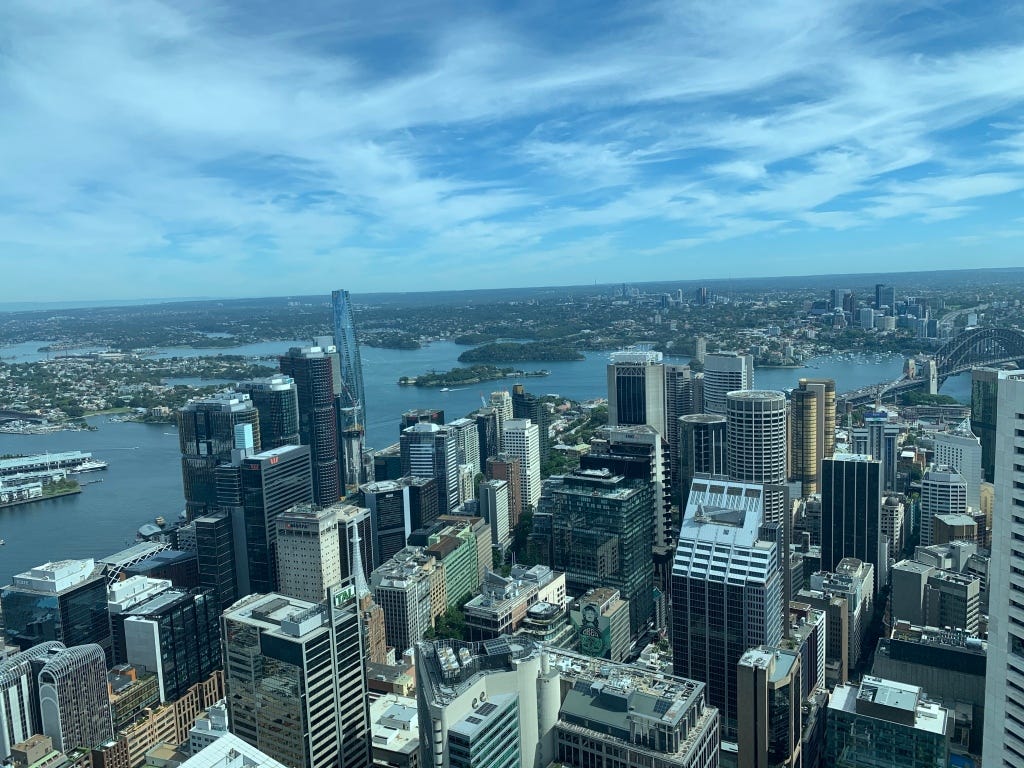What if it’s only once a week?
I attended a real full-on meeting in person yesterday for only the third time in the last year. It was at the CBD offices of a large organization. Aside from us and reception, no one was there. I assume everyone was working offsite.
This has devastating consequences for commercial real estate and public transport. Though there is some elasticity (if some firms retrench on space, others might relocate, if some passengers don’t travel to work, other trips that are no longer squeezed out might come back) obviously it’s going to hurt. Also commute travel will be less peaked. This has follow on consequences for residential preferences and will lower relative house prices near the CBD.
At the meeting we talked about the what the after COVID period looks like. For CBD office workers, the consensus expectation was people going back to the office about 3 days per week. (Recognizing about half the workforce isn’t office workers and that most office workers are not CBD based in most cities).
But it occurs to me that we may only see people coming in once a week for the group meeting, or client / vendor meetings. While in person coordination won’t drop to zero, and people are social, they may not need to be that social with those people. As digital tools get better, we will face less and less need to coordinate work in person. And while today’s software and networks were sufficient for most organizations to muddle through the pandemic, these tools are only getting better over time.
I’ve described the Futurist Fallacy before. In the future everyone will live and behave as the futurist does now. (Btw, for the record I still go into work except when I am in mandated annual leave) This fallacy is a form of projection. So we need to be careful.
But the pandemic is the largest shock to the social and economic system of most developed countries since World War II. What comes out on the other side of this will be different. Preexisting arrangements about requiring in person supervision to achieve productivity have been falsified.
So, suppose we do only have office workers meeting weekly instead of daily or 3 days a week?
For those markets (more than half of CBD oriented transit). Transit demand may be off more than 80% since now parking is easy, and there isn’t enough demand from non work trips to compensate.
Office demand collapses. Maybe some suburban firms relocate to the city to get a taste of those local agglomeration economies, but those will largely disappear ... because ... there will be no spontaneous in person interaction or serendipity anymore. Everything will have been scheduled.
People will regain 4 or more hours per week. I say “4” because the average commute is an hour round trip, now one day instead of 5, I say “or more” because congestion will dissolve with so many fewer commuters, and that’s another third or so of travel time depending on where you are. Commuters may use some of that on relocating regionally or to the exurbs, increasing distances.
Investment strategies have yet to acknowledge this possibility, and everything is being built as if the before times will be restored. That’s certainly possible, but it’s also possible we are far off on the wrong track with new infrastructure construction and real estate development.
Thanks to technology (rail, elevators, air conditioning, etc) we now can support cities that would have been unthinkably large two centuries ago. But thanks to other technology (broadband internet, wireless, computers, software) we don’t have to.
The deployment phase of this transition from the twentieth century city to twenty-first century new spatial pattern will take decades to achieve, and in the meantime new technologies will emerge (vehicle automation, drones, aerial vehicles, things we don’t yet take seriously) which will have either centralizing or decentralizing effect (I’d bet the latter, but not all my money). The office based CBD has peaked in significance. The consequences will be felt for the rest of our careers.


